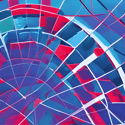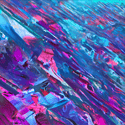We explain what these different collection types mean and examples of each
A “Single-Image” collection is an NFT collection that includes multiple copies of the same image.
The only difference between the NFTs of the collection is the edition number.
Below is an example of a Numbered Edition collection with a total supply of 3 NFTs.



“Multi-Image” includes different images within the same NFT collection. Each image can exist multiple times within the set, so some NFTs can be made more "rare" than others.
These collections are published as one Shopify product - so when fans make a purchase they don’t know which NFT they are going to receive.
For example, you can upload 5 different images and then set the quantity of each:





The quantities could be set up many ways, a few of them:
- Quantity of 1 set for each image. The total supply of this collection would be 5 NFTs.
- Quantity of 50 set for each image. The total supply of that collection would be 250 NFTs.
- Quantities of each image vary, making some images more rare. Below is an example of an NFT collection with a total supply of 455. Image 1 & 2 appear the most frequently, and Image 5 is the most rare:
- Image 1 - 200 NFTs
- Image 2 - 200 NFTs
- Image 3 - 25 NFTs
- Image 4 - 25 NFTs
- Image 5 - 5 NFTs
- Total: 455 NFTs in collection
A “Generative” collection allows you to create a unique set of images based off of layers.
Layers are made up of different “traits”, which are png files with transparent backgrounds. When a set of traits are stacked together, completely new images are created or “generated”
Unlike multi-image collections, each unique image only appears once in the collection. You can select the “weight” of individual traits, or the likelihood that a specific trait will appear in the generated set.
One common use case is to create a profile picture collection. These are sets of 10,000 or fewer NFTs which are created based on a series of layers.



